Perceptions of Maturity in Anime
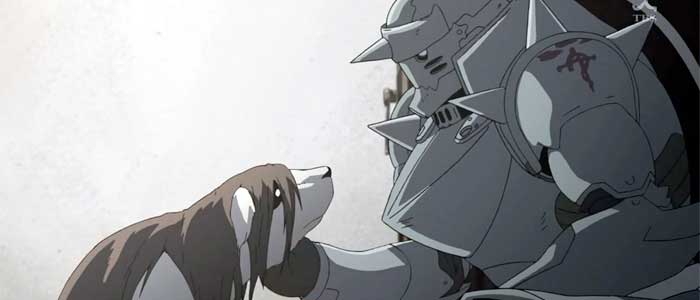
Anime has been on the consistent back foot in North America and is consistently seen as immature or not meant for adults. With sites like Crunchyroll, becoming more and more prevalent in North America more and more people are exposed to anime every day. Take for example a show like Kantai Collection: Kan Colle where its success in Japan alone that started as a game incentivised the creators to make it into an anime show as well. The show centres on a girl who has the “spirit” of a World War 2 destroyer. This coincides with her last name Fubuki and is attributed to the Fubuki class Japanese destroyer. The rest of the characters in the show are also related to World War 2 Japanese ships such as Akagi the aircraft carrier and Kongou the battleship.
With the amount of anime produced in Japan, and the range in genre and quality it is difficult for most people new to anime to wrap their heads around this form of entertainment. Not only that but the form and the visual esthetic is a lot for people to understand or even comprehend. It makes sense though that someone from North America would be very confused with the content in these shows since most visual aesthetic is in animated form and it is immediately associated with children’s cartoons. Shows that enforce this stereotype include Sailor Moon, Puella Magi Madoka Magica and Heart Catch PreCure.
These shows all share a common theme of a young girl who is given magical powers in order to fight evil and is easily associated with being only for girls. Often these girls are dressed in frilly costumes defeating evil creatures and such throughout the show. Often during comical moments the visual style turns to chibi and cartoony imagery. The term chibi is associated with how a baby looks and when a character from anime show is turned into a much smaller size with a large head and small arms and legs this means they have become chibi. The term chibi itself is slang in Japanese for “short person” or “small child”. As a side note there is a show in North America that has been well received with a large male audience but was intended for only a female audience. For those who have not heard of this phenomenon already here is a link.
To start to find what makes people feel anime to be for children besides the obvious cartoon imagery, let’s look back at the roots of where it started, and the target audience it was originally intended for as well as the multiple kinds of anime genres.
The Intended Audience For Anime
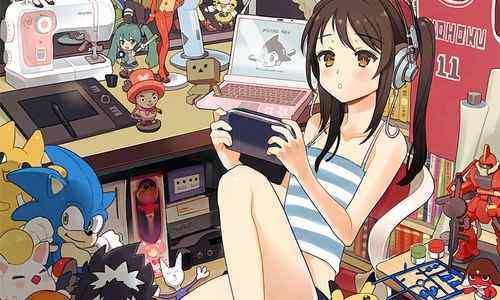
Anime is produced in Japan and meant to appeal to a very large demographic of “Otaku”. Although the term Otaku is not just confined to individuals who like anime in Japan, it will be used as a simple demographic specification. For a more specific understanding of the term Otaku go to Gaijin Goomba and watch his descriptive video. These individuals have a passion for anime to a point where there is not only collectible figures based on their favorite anime show, but also maid cafes which recreate some of the scenes from anime in an enjoyable café setting. A maid café by definition is essentially a regular café except the waitresses are maids and address you as master when you enter and address you the same way throughout your meal. This trend of maid cafes is so popular in Japan there is even a maid café in downtown New York called Maid Café NY. Beyond the animated form on television there is also manga and games which spans a huge library of content. It is very clear to see that Otaku have a huge array of content to choose from in order to keep entertained almost 24/7. However there are even anime shows which depict the real life products for Otaku such as maid cafés.
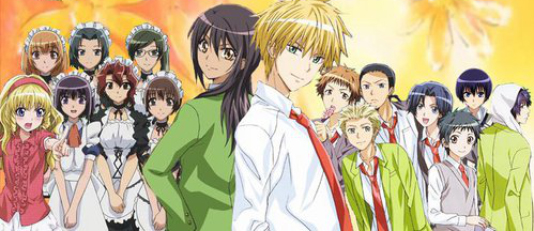
An anime that reflects this maid café aspect is Kaichou wa Maid-sama! where the main character is a high school girl and is the school president at what used to be an all boys school, and she is keeping a secret from her classmates that she works at a maid café in order to make money for her family. The café she works at is the tradition Otaku maid café with its traditional greeting at the entrance, where they address their customers as masters. There even times during the show there are events around certain genres of anime, such as dressing up as shrine maidens, or even younger sisters and having the customers be considered their older sibling. Anime since it is produced in Japan is largely intended to be viewed and consumed by this Otaku demographic and these maid cafe’s and other entertainment products such as games and manga support this demographic.
To understand more of what appeals to Otaku we need to understand their age, interests and other factors that make them interested in certain things. For example one can see that the demographic on the surface is largely male but there are plenty of female Otaku as well that have their own likes and dislikes. A show that accommodates the female side of anime includes genres like romantic comedies or male harems. A show that depicts the romantic comedy is called Monthly Girls’ Nozaki-kun. In this show the story is focused primarily on Chiyo Sakura who has a crush on one of her classmates.
The show divulges in unlikely and comical scenarios such as the boys misunderstanding that she is in love with him and giving her an autograph. On the flip side there are also romantic moments where she is alone with him and there is the usually heart pounding moment where you think they will get together. But then the comical side reappears and something interrupts their atmosphere. Suffice it to say this is intended for the female audience and reflects this by having a very emotional aspect. Besides the female orientation of anime there is also a very large age range and some otaku can even be adults and do not have to be teenagers and children. Suffice it to say the otaku culture covers a vast population of Japan and just focusing on an individual will not help us to understand what may makes others see anime as childish. However if we look not just at the individual but the entire culture we can see large cultural differences between Japan and North America.
Japanese Cultural differences

If we look at the kinds of programs in Japan we see not only is there a great difference in the way advertising is done, but also how live action television or even Japanese game shows are produced. There are clear similarities in the production of anime and other Japanese television show due to the culture it is intended for. For example in Kill la Kill the over the top action coincides with how live television in Japan is presented at times. When people from North America see this all they can see is the absurdity of it all and cannot get past and understand the underlying meaning that many anime have. For example in Kill la Kill the whole underlying premise to make us question if we are becoming too dependent on technology, and specifically wearable technology. Due to these placements of over the top action mixed with the cartoony style it can be difficult for not just North Americans but other country’s to get past the absurdity of anime, and everything happening in order to understand the hidden meanings left within.
Beyond the cultural differences we can also view that anime for the most part has a very unique way of depicting action sequences and comical moments. They usually depict a character overreacting and becoming more animated in the sense they seem less realistic than before. This tends to confuse North American viewers since they are not used to this in any form of media, besides maybe commercials and children’s cartoons. This however can be seen prevalently in Japanese television whether it be advertisements television shows and cartoons of different variety. In the end anime is used not just as a medium for entertainment it is used to depict and make you think about certain cultural issues
Anime as a Thought Provoking Medium
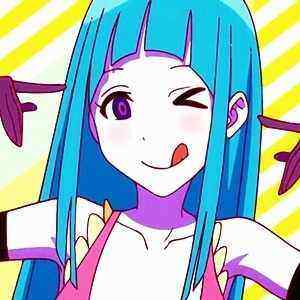
For those who do not know there are anime short films which depict graphic imagery in order to highlight an obvious problem. The most recent of which is a short film called ME!ME!ME!. In this short it depicts the life of an everyday Otaku, however it uses graphic imagery to depict the social effects of overconsumption of anime on his life. This short film is probably too graphic at times to describe in this article and would not do the content justice. An individual who has done justice to the content and thoroughly explained is Gaijin Goombah who broke down all of the imagery, the psychological and social effects anime can have on Otaku. Here is a link, for those who wish understand this topic more and fair warning this is not safe for work and you should investigate it on your own time.
Now most individuals from North America could see this short film as nothing more than eye candy for teenagers, and has no positive effect on them whatsoever. If anything some may only see it as nothing more than Japanese animated pornography. Besides this form of graphic imagery another anime short film called DyE Fantasy which depicted a similar form of graphic imagery. This is another short as well that is not safe for work so if you wish to researcher it be mindful of your surroundings. In this short it is posing the question that there is too much sexualisation in society on advertising. This is the way most anime is presented where there is underlying meaning to what is being shown, the same way artists have hidden meanings in their different pieces. This is another reason for North Americans to not see anime as a good form of entertainment and it comes down to the fan service and graphic imagery depicted in some anime shows and films.
Fan service Barrier to entry
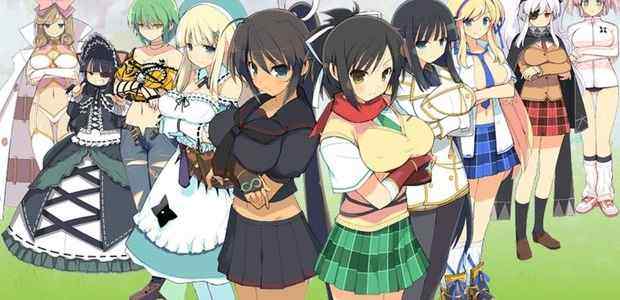
It’s not just the cute animated characters that individuals from North America cannot understand, it is also the fan service or graphic depiction of the human body both male and female that makes it difficult for them to watch and enjoy anime. This argument has also been going on that there is too much fan service in anime and on the other side there are those who believe there is enough. Both arguments have weight and a good reason behind them but that is not what this article is about.
Continuing on it is obvious that in North American culture the use of the human body depicted in different ways is more often than not used in advertising to sell products and services, it is only used as a form of entertainment during events such as beauty contests. In Japan the human body is seen in a much more different way. An anime show that depicts a great deal of fan service is a show called Senran Kagura where the main characters are well endowed teenage girls who are also ninja’s. These girls practice their ninjutsu in a secret school and they are in a war with a competing ninja school for a very powerful ninjutsu scroll. The plot for the most part centers around five characters as they increase their ninjutsu skills and compete against the enemy school. Besides the shows plot through multiple scenarios the camera displays they full bodies but never reveals any private body parts.
On the flipside there is also the male variety of fan service in anime such as Free!. In Free! the main characters Makoto Tachibana, Rin Matsuoka, Haruka Nanase and Nagisa Hazuki are part of a school swim club. They are training to become the best swim team and compete in school wide swim events. Besides that visually throughout the show there imagery of the characters six pack abs and their manly physic. These visuals in anime being accepted in Japan can be attributed to the cultural effects of Japanese culture such as mixed bathing in Onsen’s. Mixed bathing is where both male and female patrons can bathe together in the same area. Due to the existence of mixed bathing in Onsen’s the Japanese culture is very content with the human body, and is not as prudish as Western society. In the end however it is very difficult for North Americans to get past this barrier to entry into anime and some can find it quite provocative.
End Depiction of Anime
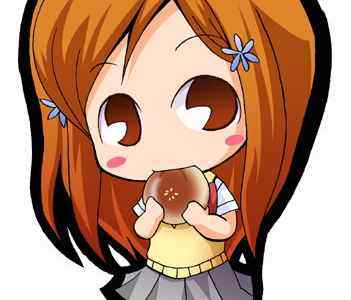
Anime for the most part can be seen as childish, immature and sometimes even scandalous. However if you are able to look past these than you can discover many different hidden meanings in Japanese anime, the same way artists like to make the viewer question and make their own decisions on certain topics. An anime that reflects this very well has been done with Fullmetal Alchemist. In this anime show which only lasted one season it depicted racism, religion, and even scientology. A good example of racism depicted in Fullmetal Alchemist is the Ishval war that took place while two main Characters Edward and Alphonse Elric were still just children. In this war the main city state of Amestris goes to war with the outlying city of Ishval due to an officer stationed in Ishval shooting an innocent Ishvalan child. This war causes almost the entire extinction of the Ishvalan race and causes a racists bias towards Ishvalan’s wherever they are. Regardless of the material being depicted appearing to be for children it can still be appreciated by adults and kids alike. Different messages can be found in many different anime, and it is up to the viewer whether they see it as just flashy cartoon imagery for kids, or thought provoking questions in an enjoyable show.
What do you think? Leave a comment.


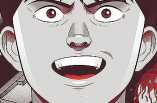

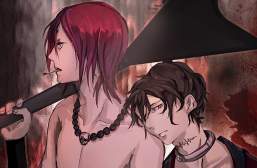
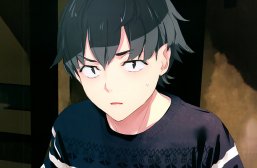
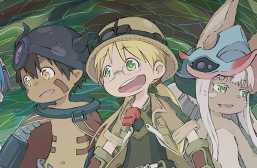
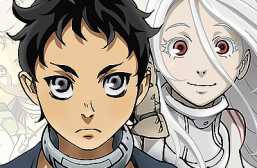
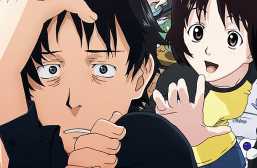
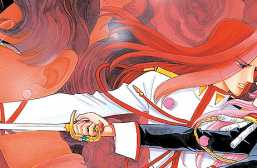
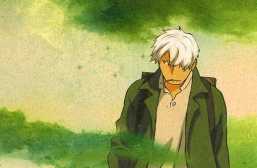
I’m not really a fan of labeling anything as “mature” or “immature” as its really subjective. The generalized idea of “mature” is based on traditional American TV and Movie ratings (well at least for Americans like me) which are just there to appease concerned parents.
People like to consider themselves more mature so the simple label of “mature” can have substantial appeal. This can can be compared to how some people generalize anime to be “immature” and therefore not suitable to be watched as they are too old.
Labeling something “immature” can make people feel mature as it elevates their own maturity to be above what they are labeling. These subjective generalizations of “mature” and “immature” just detract from the relevant content in anime reviews.
I understand by definition that maturity isn’t exactly accurate when referring to this kind of topic. I was using it the same way Otaku was used its not exactly the right term and is not completely accurate but it is still helpful in pointing the reader the general direction of the discussion. I do still appreciate your thoroughness on this article since this is my first article. I will keep this in mind when I right my next one.
I recommend Tokyo Ghoul for being a well written balance of action, romance and drama that explores what it would really be like to be a monster in our world today.
For me personally I tend to steer away from the horror/gore anime but I will try to look at the first episode at least and see if I enjoy it.
I still think that at least tokyo ghoul manga is mature (and I watched the anime first) it has a lot of shonen stuff, but it goes deep into several psichological aspects of people in diferent moments while being part of a 2 part society that just doesn’t work for neither side. This shows in the anime in the scene when SPOILERS: both Touka and the inspector blame each others side for everything wrong with the world, and only Kaneki who has experienced both sides can tell that they’re both full of bullshit. END SPOILERS
I enjoyed Tokyo Ghoul and I was thrilled when root attempted to finish off the first season and continue on. I won’t be stopped from watching another season, but I honestly don’t want to see it happen. Tokyo Ghoul took a turn from the horrific themes to generic action, and it really is a sign of selling out to stay alive, sometimes this can be a good thing, but in the case of TG it was far from it.
When i think about mature anime cowboy bebop comes to my mind.
I find that it takes a more ‘mature’ person to sit through and watch an actual ‘mature’ anime.
To be honest, i am glad i dont know every thing there is to know about anime, the more I watch the more i learn of course, but i watch anime and read manga for enjoyment first and educational analysis second, of course over usage of nudity and violence get boring (also at times plain strange) and a serious well thought out story are beautiful things indeed, but in the end it is a fictional character in a fictional story and ought to be appreciated in that manner.
I totally agree and feel this is how anime should be looked at first and foremost, but it is undeniable in some scenarios that people get lost at this step and lose interest. In some cases just from the culture shock alone people are confused and don’t want to watch anymore.
It all depends on what type of anime you were exposed to.
For me it does not matter if you like anime like death note ect or if you like sailor moon, most of us have mostly heard people talking about how weird we are for liking it at-least i have.
It is going to be a long time before people all over to accept the fact that anime isn’t always childish.
So true but I feel we are getting closer to being accepted not just based on the prevalence in Western society now but how much Japanese animation is interested in the North American market. Eventually anime may even be the foothold which bring even more Japanese culture to the west. But this is all hypothesis and grand ideas, nonetheless I hope it comes to fruition.
My perception has always been that people not into anime only see a single side of anime as a culture and an artform, and usually not the best side. When people think anime, they think either shows aimed at children or shows with too much fanservice. They also think about the otaku stereotype: a pasty, awkward person who never sees the light of day and eschews all social contact to drool over scantly-clad animated girls. And while yes, all of those things exist in anime, it’s only one slice of the pie. You can’t fairly judge something as big as anime on such narrow view.
Really, anime is no worse than any other medium. Over-sexualization is a rampant problem in just about every form of media; anime is not unique inn this respect. Yes, there are super-fans who take their enjoyment to an unhealthy level, but there is not a single medium that doesn’t have those sort of people. And yes, this by no means absolves anime of these errors, but to pick it out as unique in having these problems is unfair and inaccurate.
Furthermore, people often try to reduce anime to just “Big fighting robots” or “Childish cartoons”, which bugs me to no end. Anime is not a genre; anime is a medium. Anime can be of any genre: action, romance, thriller, psychological, philosophical, horror, to name a few.
This reminds me of a TED talk called “The Danger of a Single Story”. I would recommend it to anyone curious about this.
Great article and topic of conversation! Really enjoying articles on this site.
thanks for my first article this means a lot
Admittedly, there are some aspects of anime that may turn off first time viewers. The constant exposition and the obvious fan service is a lot to take in at first. For me, I love anime because we don’t have any mature animated show that are sentered around action. America have a lot of mature animated comedy shows, but not action. It just goes to show how Japan take their animation more seriously.
I have to mention the show “Flowers of Evil”. Holy crap is it hard to watch. It deals with really dark themes and shows the depths of insanity. It’s seriously the most mature thing I’ve watched in recent memory.
My favorite generas are sci fi and horror, both have problems I can’t even imagine how many sci fi comics I’ve dropped from my pull list just because they use the same old something goes wrong individual is lost in a desert formula. I was a skrub once I was nuts over Elfen Lied and Naruto, but I grew up and that comes to people with time.
Experience develops a person, I didn’t get to where I am today by starting off with Grave Of The Fireflies or MW. People grow or they get left behind I was recently talking to a friend about life in college, and he was talking about the anime club at his university, he said that they still wanted to watch the “same shit we watched in high school”. Naturally I asked “well whats the same old shit?” he then replied that he wanted to watch things like Xamd, and Hellsing, the same shit he wanted to watch in high school since freshmen year.
I am a teenage boy and shows just like mushishi, ghost in the shell, monster ect really appeal to me. I am watching 1 generic shounen show this season (seraph of the end) but Arslan senki, kekkai sensen and fate/stay night are far superior in every way.
I’m about to watch Monster pretty soon. Hope I like it. I already liked Mushishi, though Kino’s Journey did more for me. Good names though.
Most of the more mature anime that I have watched and know of have minimal action sequences, and few sex scenes if any.
The kind of anime that the average teenager will take a look at and say it’s boring as shit. That’s just my opinion. I’m also a fan of political dramas, and psychological shows, so that probably has a lot to do with my out-look on maturity.
Imo most of the mature anime i have watched have been completely bloodless and have had no explicit sex, such as Clannad ( I consider the themes clannad aboards, specially in after story, pretty mature. Not gonna talk about the ending because spoilers, but i still think its generally a mature show) and 5cm per second.
More “mature” anime are the shows that have a story that requires half a brain to understand.
While i agree with you that doesnt make anime/manga such as gantz any less mature.
When people say Anime is for kids, they obviously have not seen Mirai Nikki. Heck, they should give Princess Mononoke a watch, say it’s for kids and keep a straight face while they’re at it.
For North Americans, I think they believe anime is “childish” because of what the broadcasters show. For example, in Sailor Moon, they needed to change Sailor Neptune and Sailor Uranus into cousins when they are lovers in the manga.
It’s a bit silly, but anime does have mature elements if you watch the originals.
I’ve always been interested in anime (I was a huge fan of Sailor Moon when I was a kid), but I never truly delved into it.
Maybe I’ll watch some while I have free time this summer.
It comes down to its themes and execution of such themes.
Personally I’ve always been more partial to anime that is on the more cerebral side of things. I don’t mind sex and gore and I don’t think it should necessarily be actively avoided by writers of anime whose target audience is old enough for it, but the sex and gore in my mind needs to serve some kind of higher plot-related function in order to really impress me. Gore can be used for shock value, but shock value isn’t a selling point by itself; it’s a tool that the artist should use to some different end, whether it’s a matter of world-building or a meticulously crafted plot twist or a glimpse into a troubled psyche… spectacle can be fun, but when it’s just spectacle it’s just not as impactful.
I think Attack on Titan is a pretty good example of how the writers use gore as a way to keep illustrating how high the stakes are for the humans in the world they’ve built, and the level of trauma the characters must endure in order to protect their own species from extinction. I’ve occasionally wondered if the titans might even be a metaphor for war itself, especially siege warfare, as the concepts of in-groups and out-groups are explored throughout the series, and the function of the gore is essential to the angle that “war is hell.”
As for sex, I’ve always seen that mainly as a tool for character development; different people have different attitudes towards sex, different preferences, different emotional attachments, and where sex is such a personal matter for most of us it can be a very insightful moment to reveal a character’s bedroom behaviors and emotions. I think most people here will probably agree that no anime has utilized this quite as deftly as Neon Genesis Evangelion, most obviously with Misato, whose sexcapades paint a picture of a very complicated woman juggling strength, impulse, insecurity, vulnerability, guilt, pride, and autonomy, among many other ever-shifting aspects of her personality… but also with the adolescent characters as they’re still first learning to navigate their sexual growth and how this pubescent phase is affecting their values and identities.
I think that a lot of us go through a phase as we are maturing when sex and gore become available options for our viewing pleasure and the newness of the experience holds a certain fascination in and of itself.
But for me, these spectacles lost that pure essence long ago. They are now a means to elicit a reaction in the audience, but for a truly great anime, these reactions have to be consciously constructed by a writer or team of writers to serve as a mere puzzle piece in an overall richer experience of an anime.
I think in a way sex and gore are comparable to the idea of common anime tropes. Sure, you can create a few characters and string together a series of fan-loved tropes and call it a work of art, but the anime that typically triumphs over the others are the ones in which the tropes serve the characters and plot, rather than the other way around.
All this on mature anime made me wish Vinland Saga, Vagabond & Shamo would be picked up for adaption.
When there’s violence and sex appeal in the show, which doesn’t have a reason to be there (for whatever contribution to the show’s plot or whatever), it seriously doesn’t help its maturity level.
My parents don’t doubt about my maturity but instead they doubt about my sanity because I love these kind of animes
there is a median when it comes to Anime and maturity. things like Dragon Ball Z and Dragon Ball. and then there is the others like Code:Geass or Evangelina
You mean Evangelion? Because that’s like an whole other ball park from code geass.
I was born and raised in Japan so anime was basically part of my life. I remember watching hokutonoken 5:30AM before school to get me pumped up for morning exercise. Around 4:30PM, Ranma 1/2 came on and Magirkarutaruruuto right after. Then there will be filler shows like shin Chan and Sazaesan. One of the most famous anime growing beside Dragon Ball was Dragon Quest Dainodaiboken. When yuyuhokusho arrived in early 90s, there were debate in school which was better, dbz or yuyuhakusho. We had this thing called shitajiki. You can buy your favorite anime covers for it and represent which you preferred lol
Anime is growing in popularity every year. It’s been with us for a long time. Many people may not realize this. It has broken into the mainstream several times.
Watching and reading a variety of anime and manga is key.
It’s interesting how different people see different things in a story.
This is very true. For example I gave one that I wrote to 4 people. Each one of them focused on different themes, saw a different overall message and enjoyed a different aspect of it. So I guess fan interpretations can be taken into account for some shows.
I think that this article was wasted on people like me, because the only anime that I like is that directed towards children. Sorry, I’m in the camp that sees most anime as usually being TOO “mature.” And, I mean, one can deal with serious topics in a way that makes one’s movie/show only PG or a weak PG-13. I mean, some movies about the Holocaust are R or NR, but a lot of (in my opinion) very good movies on the Holocaust that still effectively teach how cruel and unjust it was are (generally) still child appropriate. As far as fan-service goes, it seems to me that the best way to combat and criticize sexualization in the media is hardly to actively participate in it. If you do that, then you’re still just feeding and encouraging lust.
Death note is still my favorite anime. First season was perfect imo. My friends say that attack on titan has bad pacing when erin took an whole episode to move a rock. (for a 25 episode series) But monster you could watch the first 5 and last 5 episodes give or take 2 episodes in between and understand the whole story.
its funny that some people believe nudity and violence make anime more mature there just like gamers believing the m on the game makes it mature
“Mature” has a specific definition when it comes to rating contents.
There’s a similar movement in the literary world where the graphic novel is not taken as seriously as the written novel, despite tackling hard subjects (see Spiegelman’s Maus, Satrapi’s Persepolis, Bechdel’s Fun Home). What people fail to see is that the animation does not take away from the content.
I agree as well with the above comments that the word “maturity” can mean so many different things because of how inherently vague it is. It’s especially disheartening when “mature” is assumed to mean pornography as well as fan-service in the context of anime since that’s often how anime is treated in the west besides being viewed as “immature for adults” as the article says. Those points of view on what is “mature” are so prevalent that anime that doesn’t fit a sexual expectation tends to get overlooked like two of my personal favorite anime: Barefoot Gen which is about the Hiroshima atomic bombing and Angel’s Egg which reflects on how artistically subtle anime can be as a visual medium.
The question of what makes a mature anime can really differ for some people for sure, but it all comes to the effort in quality. While some animes have taken more risks than some north american cartoons, there are some animes that do try too hard but in the end become so convoluted and boring. Much like how for every silly north american cartoon, there will always be a silly anime. Its just finding that balance that appeals to the tastes of different people…and pending on dubbing lol. But even these days sadly, the maturity of anime seems to be washing away slowly when it comes to the over saturation of fan services in anime. There will always be that, but there needs to be a balance.
Sadly, I think personal subjectivity may be an impediment towards seeing whether a medium of entertainment is mature or immature or just plain weird. Its rare to see people able to throw away personal biases to see what is really hidden beneath – most are still able to raise examples about the copious amount of hentai and pure fanservice-dedicated harem romcoms just to prove their point that anime is immature or unhealthy. It probably goes back to societal perceptions of anime and the demographic of otakus who enjoy it, at some point.
I think the perception of maturity when it comes to anime comes from what animes are mainstream since those are the ones that most people have seen or heard of. I mean if you tell someone you watch anime their usual reaction or what they think is anime is typically Pokemon, Naruto, Sailor Moon, or animes that are typically geared towards children. It’s a terrible thought but I think that’s why. But since now you do have so many different online sources and also steaming services such as Netflix and Hulu who show anime it has widen many people’s perception of maturity when it comes to anime.
Anime cannot be compare to cartoon which aimed for children. Some anime are design for adult or young adult people who have better knowledge and can separate between fantasy or reality.
When I watched “Ghost in the Shell movie” as children ages ago I thought was that the real world in 1997-2000 where people got cybernetic implant and supercomputer affect our daily life.
Later, I watched the movie in 2000, I already had enough knowledge and mature enough to understand that it was just fantasy and had fun watching it.
I think this a best way to describe my maturity development.
You have to agree that their body’s are better looking same with their abs.
I think it is awesome!!!!!!!!!.